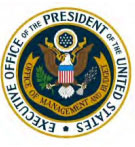Watch this hour-long video with Jerad Speigel talking about EA in US Government today:
Background
The former US Federal CIO, Steven VanRoekel, in 2012 launched a plan for doing more with less and devising solutions with a “shared first” and a “future first” perspective to “yield a higher return on our IT investments, increase productivity, and improve the way the government interacts with the American people”. In his first public keynote, he announced that the “Shared First” initiative is aimed at rooting out waste and duplication across the Federal IT portfolio, and that the “Future First” initiative “will help us continuously architect for the future”.
- The Common Approach to Federal Enterprise Architecture, which provides guidance for a common approach to the practice of Enterprise Architecture (EA) throughout the Executive Branch of the U.S. Federal Government.
- The Federal IT Shared Services Strategy and its Shared-First effort is using “a cross-organizational perspective to identify opportunities for the consolidation of redundant mission, support, and commodity IT services at all levels, in all federal sector Lines of Business (LOBs), in all program areas, and with all IT acquisition vehicles”. The strategy states:
Federal Agencies must innovate with less given current fiscal constraints, increasing mission requirements, rising customer expectations, and the ever-evolving landscape of IT. For Federal Agency Chief Information Officers (CIOs) this means that they must:
- Deliver solutions faster, for less money, and with fewer resources;
- Develop authoritative future-ready business and technology architectures / standards to guide investment; and
- Take advantage of evolving technologies and methodologies to accomplish agency mission and support functions more efficiently, while also improving quality and flexibility.
To be successful in resource-constrained operating environments, Federal Agencies must also eliminate wasteful spending that result from implementing duplicative solutions for mission, support, and commodity IT functions.
The Common Approach to FEA is an executive guide to the next egeneration federal enterprise architecture. It was followed up by the Federal Enterprise Architecture Framework v2 (FEAF-II), which became public in 2013.
In February 2015, Tony Scott became the next United States Chief Information Officer, with a mission to drive the Administration’s Smarter IT Delivery Agenda and the core objectives across the Federal IT portfolio – (1) driving value in Federal IT investments, (2) delivering world-class digital services, and (3) protecting Federal IT assets and information.
